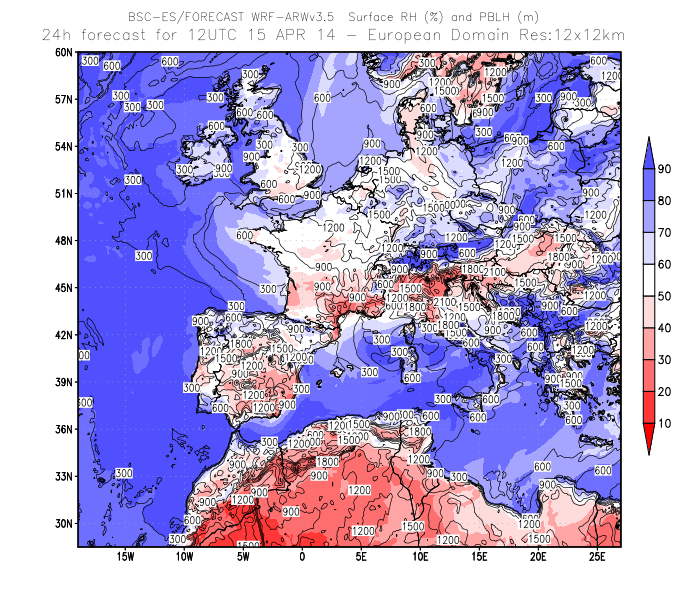WRF-ARW
During the campaign numerical simulations of atmospheric variables including planetary boundary layer (PBL) height, 2-m air temperature, and wind speed and direction from the WRF-ARW (Weather Research and Forecasting – Advanced Research WRF) mesoscale meteorological model will be evaluated. WRF-ARW is a non-hydrostatic mesoscale numerical weather prediction model developed at the National Center for Atmospheric Research and is an important model component in the CALIOPE air quality forecast system (http://www.bsc.es/caliope). WRF-ARW v3.5 offers the choice between ten different PBL parameterization schemes, each with a unique method of parameterizing the PBL structure and turbulent kinetic energy. The WRF simulations of PBL heights will be validated against PBL heights determined from a Raman lidar using a Kalman filter approach and from planned radiosoundings using the bulk Richardson number method. Also, WRF simulations of air temperature and wind speed and direction will be compared with measurements from in-situ meteorological sensors. The main objective of this work is to assess the sensitivity of atmospheric variables in the PBL to different PBL parameterization schemes.
The configuration of WRF-ARW v3.5 for the HygrA-CD campaign will include an outer parent grid covering most of Europe and N. Africa and two nested grids covering the Athens metropolitan area. The spatial resolution of the the model domains are 12x12 km, 4x4 km and 1x1 km for the parent, intermediate and inner domains respectively.
| PI | Robert Banks |
| Provider | BSC |

Recent activity
Uploaded data
News
- VTDMA operating at N.C.S.R. DEMOKRITOS (Jun 18th)
- HTDMA operating in N.C.S.R. DEMOKRITOS (Jun 13th)
- Optical Particle Sizer Spectrometer in NTUA (Jun 13th)
- Josh Vande Hey visited HygrA-CD (Jun 11th)
- Press coverage (Jun 6th)